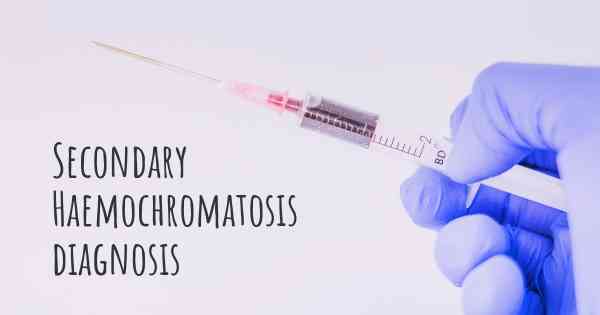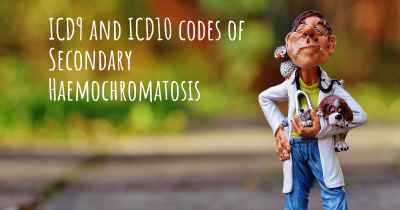How is Secondary Haemochromatosis diagnosed?
See how Secondary Haemochromatosis is diagnosed. Which specialists are essential to meet, what tests are needed and other useful information for the diagnosis of Secondary Haemochromatosis

Secondary haemochromatosis is a condition characterized by excessive iron accumulation in the body, resulting from an underlying cause such as chronic liver disease, certain types of anemia, or repeated blood transfusions. Diagnosing secondary haemochromatosis involves a combination of medical history assessment, physical examination, laboratory tests, and imaging studies.
Medical History and Physical Examination
During the medical history assessment, the healthcare provider will inquire about symptoms, family history of haemochromatosis, and any known underlying conditions that may contribute to iron overload. They will also perform a thorough physical examination to check for signs of haemochromatosis, such as skin pigmentation changes, liver enlargement, or joint pain.
Laboratory Tests
Several laboratory tests are used to diagnose secondary haemochromatosis:
- Iron Studies: Blood tests measuring serum iron, transferrin saturation, and ferritin levels are crucial in evaluating iron overload. Elevated transferrin saturation and ferritin levels indicate excessive iron accumulation.
- Liver Function Tests: These tests assess liver health and function. Abnormal liver function may suggest underlying liver disease contributing to secondary haemochromatosis.
- Genetic Testing: In some cases, genetic testing may be performed to identify specific gene mutations associated with haemochromatosis. However, this is more commonly used in primary haemochromatosis diagnosis.
- Hepatitis Screening: Since chronic liver disease is a common cause of secondary haemochromatosis, screening for hepatitis B and C viruses may be conducted to identify any underlying liver infections.
- Anemia Evaluation: If anemia is suspected as the underlying cause, additional tests such as complete blood count (CBC) and iron panel may be performed to assess red blood cell production and iron levels.
Imaging Studies
Imaging studies are often utilized to evaluate iron accumulation and assess potential organ damage:
- Magnetic Resonance Imaging (MRI): MRI is a non-invasive imaging technique that can accurately measure liver iron concentration. It helps determine the severity of iron overload and monitor treatment response.
- Transient Elastography: This specialized ultrasound technique measures liver stiffness, which can indicate fibrosis or cirrhosis caused by chronic iron overload.
- Liver Biopsy: In some cases, a liver biopsy may be performed to assess the extent of liver damage and confirm the diagnosis of secondary haemochromatosis.
Conclusion
Diagnosing secondary haemochromatosis involves a comprehensive approach, including medical history assessment, physical examination, laboratory tests, and imaging studies. Iron studies, liver function tests, genetic testing, and hepatitis screening are essential in identifying iron overload and potential underlying causes. Imaging techniques like MRI and transient elastography aid in evaluating iron accumulation and assessing organ damage. A proper diagnosis enables healthcare professionals to develop an appropriate treatment plan to manage secondary haemochromatosis and its underlying condition.








